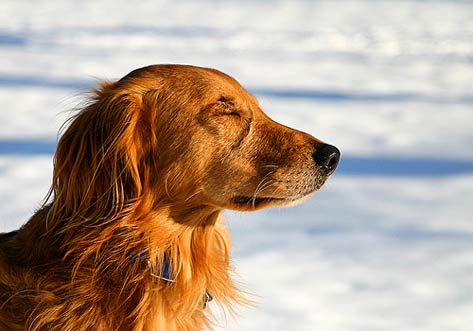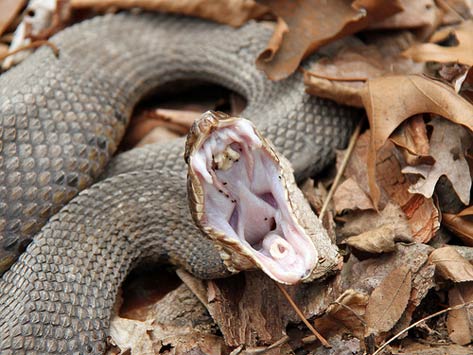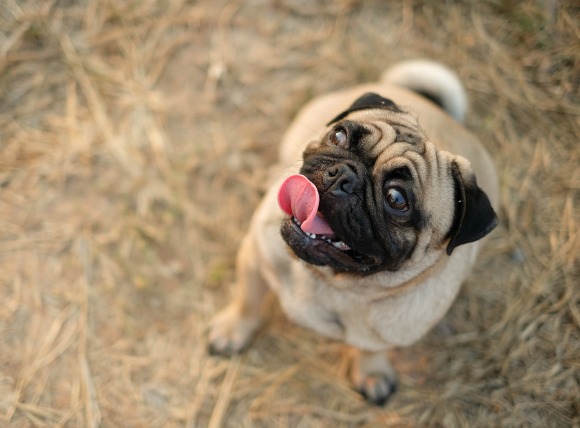

No surprise here, but winter can get mighty cold, making it much more comfortable to stay in the nice warm house. Our pets, however, may either spend their time outdoors exclusively or just like to go outdoors every once in a while. In freezing temperatures, even a little outdoor time can drastically affect the body. Just as we humans take precautions to keep our skin safe from the blustery cold (e.g., mittens, hats, boots), there are some precautions we can take to keep our pets safe too.
Before the onset of cold weather, take your pet for a veterinary examination. If there are any pre-existing health problems, now is the time to find them and treat them, since the stress of cold weather can worsen any pre-existing health problems.
Grooming is also an important part of well-being, even in winter. Fur that is heavy and matted with dirt and moisture cannot protect the underlying skin from extreme cold. As the body struggles to maintain a healthy temperature, the immune system can become more susceptible to illness. Also, check your pet’s ears and feet regularly, trimming the hair between the footpads so that ice cannot accumulate between the toes.
It’s fine to focus on keeping your pet lean during the warm months, and portioning food is an important part of weight maintenance, but when the weather turns cold, you need to help your pet put on a little insulation by giving him extra calories. High-quality, high-calorie foods are an essential part of staying healthy through the winter, along with plenty of fresh water. Animals should never have an empty water bowl, but do keep in mind that bowls kept outside should be checked regularly for freezing.
Another important consideration is the type of bowls you use. Stick with a good, heavy-duty plastic pet food bowl for cold temperatures and save the metal bowls for the warm months. You know how people sometimes get their tongues stuck to frozen lamp poles? Yeah, who wants that happening to their pet?
Your pet will need a safe, dry space that is insulated from the frigid winds of winter. In fact, in many states, animal protection laws require a shelter for protecting outdoor pets, underscoring the importance of this essential creature comfort. Shelter is not a luxury, it is necessary for winter survival. The shelter can be a dog house or a repurposed shed, or it can be a very basic structure in which your dog or cat is able to find protection from the elements. Whatever you choose, just make sure that the space is large enough for your pet to turn around inside and lie down comfortably. The structure should be raised up off the ground -- perhaps on blocks or supports -- and contain some dry and durable bedding material for added warmth. For instance, a thick layer of clean, dry straw makes excellent bedding material, since it is less likely to stay wet and an animal can adjust the straw to its own comfort.
If you do choose to use blankets, check them daily, as wet blankets will freeze and will not provide necessary warmth to your pet. Neither heat lamps nor heating pads are recommended. The electric cords may be chewed and damaged, which can lead to serious problems if water spills on them or if the animal continues to chew on the cords. In fact, electrocution due to chewed wires is a common and yet preventable accident.
Speaking of accidents, many people use salt on their driveways and surrounding sidewalks to melt away snow and ice. However, some of these salt mixtures are not only abrasive to the asphalt and concrete, they are dangerous for pets. They can irritate your dog and/or cat's paws and, when ingested, are extremely toxic. Instead, use non-toxic, pet-friendly salt mixtures. Your pets and the environment will thank you.
Last, but certainly not least, do not forget to check in on your pet several times a day to monitor her health and well-being. If you find that your pet is shivering, look for signs of frostbite on the ear tips, foot pads and tail. Also, be watchful for lethargy, which can occur after hypothermia has already had an effect on the body.
Both frostbite and hypothermia can quickly become fatal. In some cases, the animal may survive, but will lose the part of the body that suffered permanent tissue damage form the freezing (frostbite).
Finally, if you are a witness to an animal that is being kept out of doors, and it appears that the animal has not been provided with adequate shelter, bedding or food, report the address to your local humane society so the animal can be helped. Leaving an animal exposed to extreme cold (or heat, for that matter) is cruel. Reports can be made anonymously, so you should never be afraid to speak up against animal cruelty in your community.
Image: Andrew Morrell / via Flickr
 Kidney Failure in Dogs
Kidney failure has it origins in a wide variety of
Kidney Failure in Dogs
Kidney failure has it origins in a wide variety of
 Acral Lick Granuloma: A Dermatology Nightmare
By T. J. Dunn, Jr., DVM
Everyone who has ha
Acral Lick Granuloma: A Dermatology Nightmare
By T. J. Dunn, Jr., DVM
Everyone who has ha
 Snake Bites And Dogs
Venomous Snakes and Dogs
By T.J. Dunn, Jr.
Snake Bites And Dogs
Venomous Snakes and Dogs
By T.J. Dunn, Jr.
 Does My Dog Have Fleas?
How to Inspect and Remove Fleas from Your Dog
By J
Does My Dog Have Fleas?
How to Inspect and Remove Fleas from Your Dog
By J
 Lumps and Bumps on Dogs
By T. J. Dunn, Jr., DVM
There are very few surpri
Lumps and Bumps on Dogs
By T. J. Dunn, Jr., DVM
There are very few surpri
Copyright © 2005-2016 Pet Information All Rights Reserved
Contact us: www162date@outlook.com